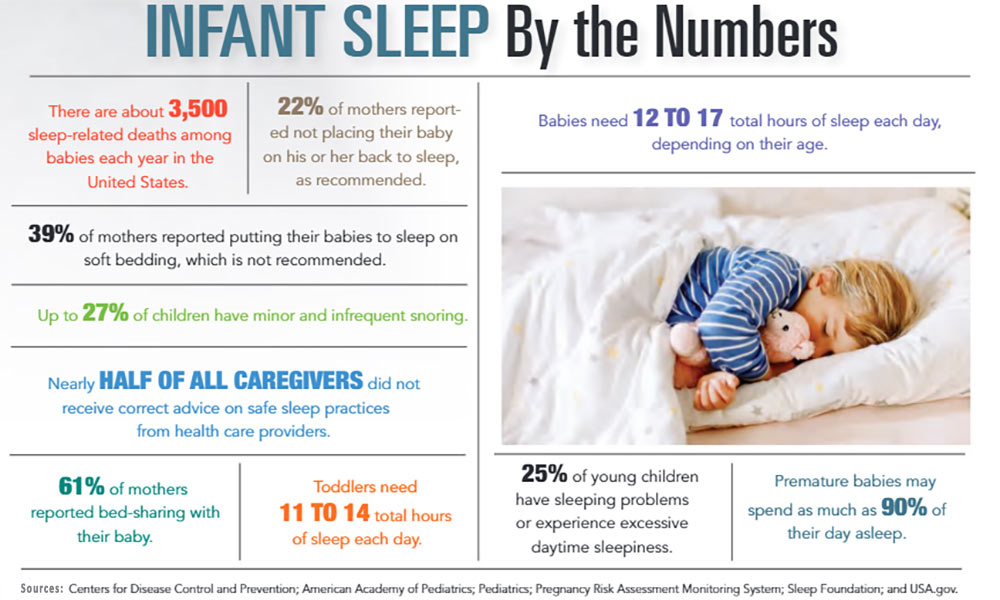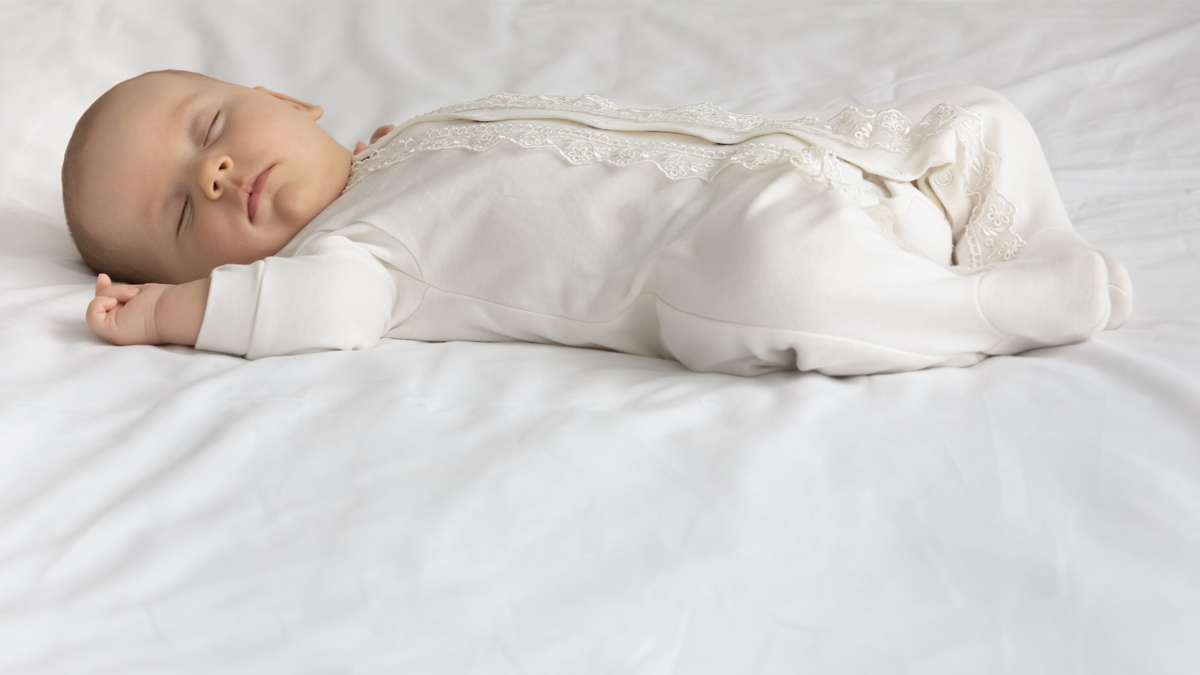The American Academy of Pediatrics has issued new sleep guidelines for babies. Infant deaths were reduced in the 1990s when it was first recommended to put babies on their back when they went to sleep. However, the decline in infant deaths has slowed since the late 1990s, and health care providers are now being encouraged to counsel caregivers on safe sleep practices.
- Infants should be put to sleep alone, on their back and on a flat, firm surface.
- Babies should not be in bed with Mom and Dad.
- Eliminate hazards such as blankets, pillows, bumper pads and soft toys from the sleep area.
- Urge mothers to breast-feed if they are able and not to rely on baby monitors that claim to prevent sudden infant death syndrome.
- Cribs that are inclined should not be used; some have been recalled due to infant deaths.
- There are about 3,500 sleep-related deaths among babies each year in the United States.
- 22% of mothers reported not placing their baby on his or her back to sleep, as recommended.
- 39% of mothers reported putting their babies to sleep on soft bedding, which is not recommended.
- Nearly half of all caregivers did not receive correct advice on safe sleep practices from health care providers.
- 61% of mothers reported bed-sharing with their baby.
- Babies need 12 to 17 total hours of sleep each day, depending on their age.
- Toddlers need 11 to 14 total hours of sleep each day.
- 25% of young children have sleeping problems or experience excessive daytime sleepiness.
- Premature babies may spend as much as 90% of their day asleep.
- Up to 27% of children have minor and infrequent snoring.
- To see if any of the products you use for your children and infants has been recalled, visit www.USA.gov.
By Stacy Domingo








